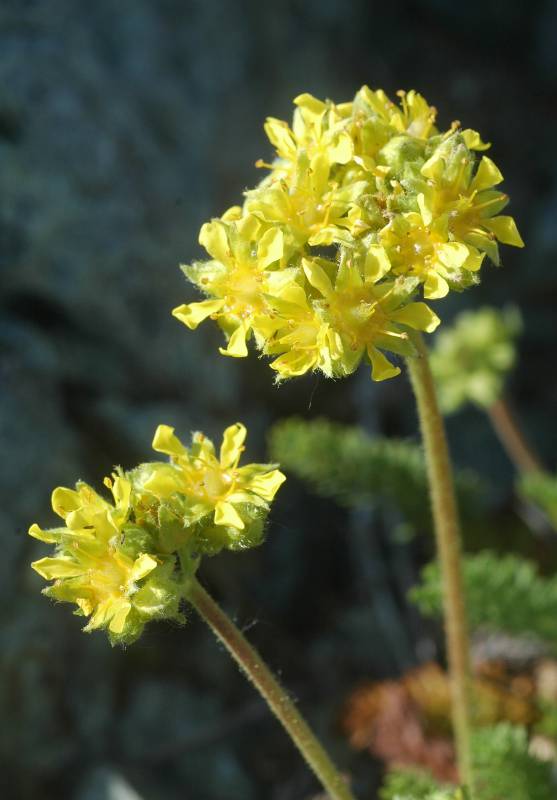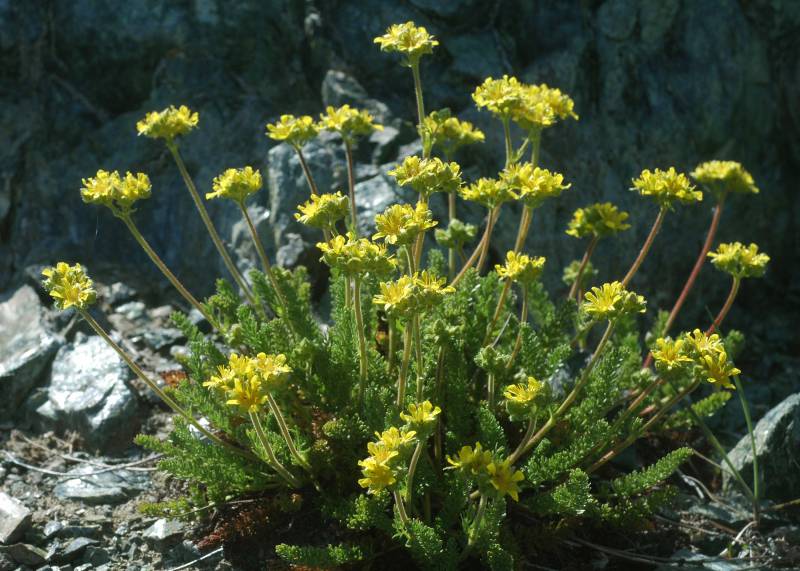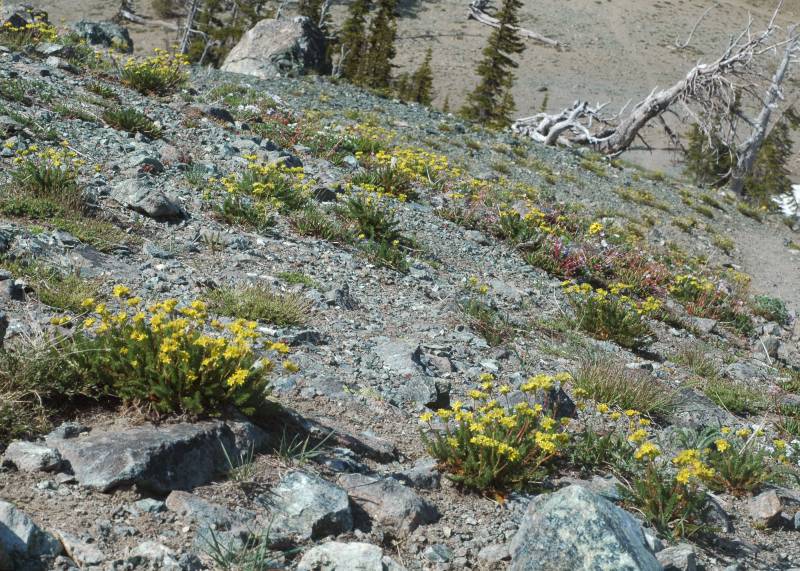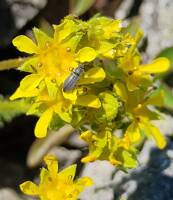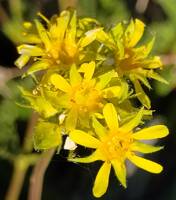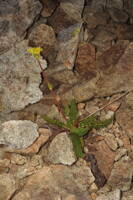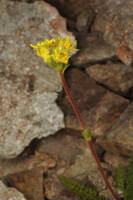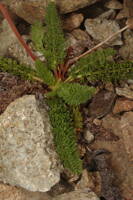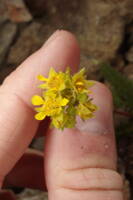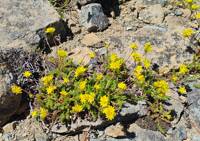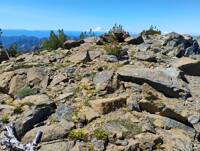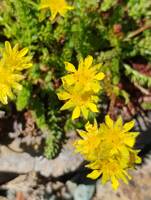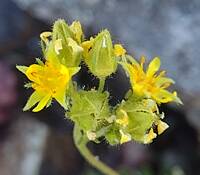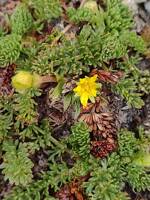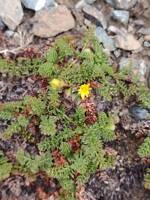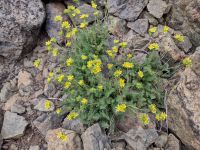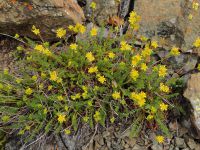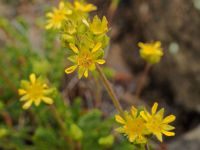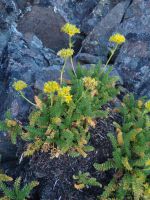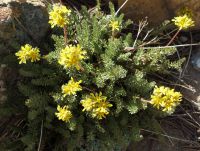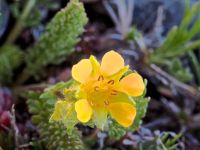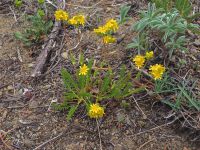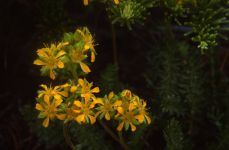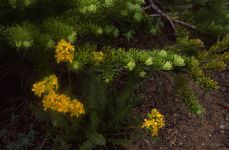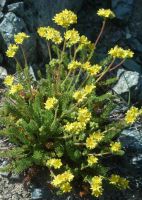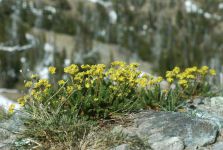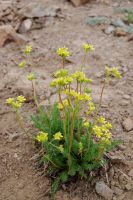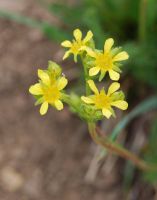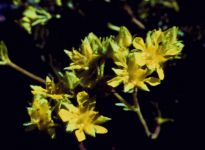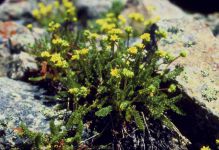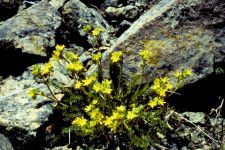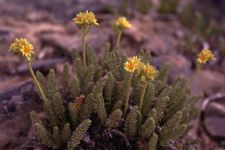Distribution: Occurring east of the Cascades crest in Washington; Washington to Idaho and Montana.
Habitat: Dry, open to wooded areas, middle to high elevations in the mountains.
Flowers: June-August
Origin: Native
Growth Duration: Perennial
Conservation Status: Not of concern
Herbaceous perennial from a strong taproot, the flowering stems 5-20 cm. tall, nearly glabrous below and glandular-pubescent above.
Basal leaves numerous, the blades 3-8 cm. long, pinnate, the leaflets 19-35, less than 1 cm. long, dissected into many filiform or linear segments; cauline leaves 1-3, greatly reduced, the stipules well developed.
Inflorescence a congested, terminal cluster; calyx bowl-shaped, yellowish-green, the 5 lobes deltoid-ovate, yellowish, 2.5-3 mm. long; petals 5, yellow, elliptic to spatulate, longer than the sepals; stamens 5, pistils 4-6.
Achenes 2 mm. long, smooth.
Publication: Leafl. W. Bot. 4: 176. 1945.
Ivesia tweedyi Rydb.
PNW Herbaria: Specimen records of Potentilla tweedyi in the Consortium of Pacific Northwest Herbaria database
WA Flora Checklist: Potentilla tweedyi checklist entry
OregonFlora: Potentilla tweedyi information
E-Flora BC: Potentilla tweedyi atlas page
CalPhotos: Potentilla tweedyi photos

